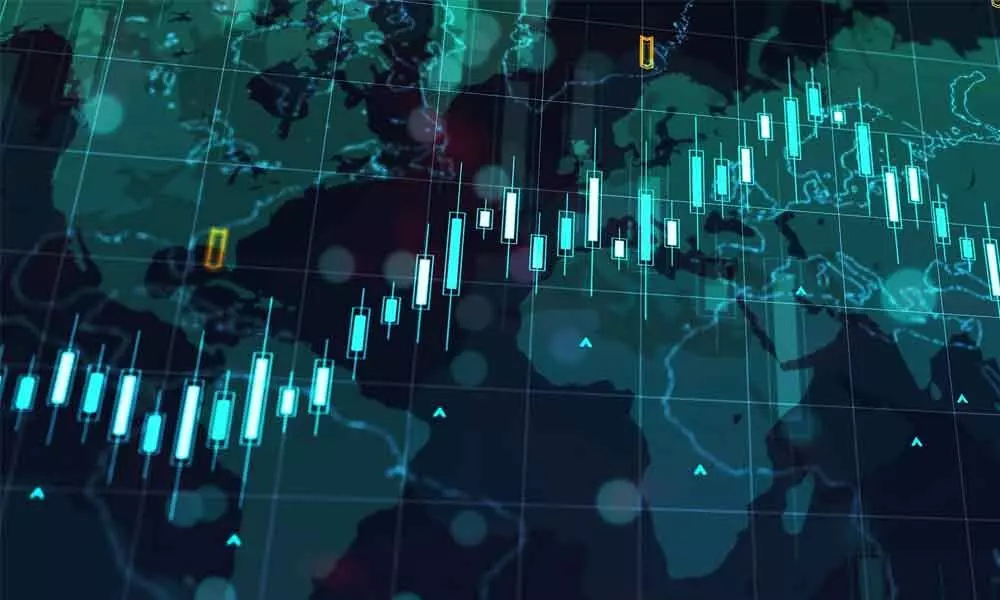Markets look to inflation, IIP data

Markets look to inflation, IIP data
On the back of additional measures for stressed sectors by RBI, positive global cues and ‘green shoots’ in economy, markets rebounded smartly from lows of the early part of the week ended to close on a positive note.
On the back of additional measures for stressed sectors by RBI, positive global cues and 'green shoots' in economy, markets rebounded smartly from lows of the early part of the week ended to close on a positive note. During the last week, the benchmark indices -the NSE Nifty and the BSE Sensex advanced by 141 points and 433.68 points to close at 11,214 and 38,040 respectively. The broader market continued to outperform the frontline benchmarks; evident by 4.1 per cent rally in the NSE Nifty Mid-cap Index. Fiscal stimulus has been a key driver in the stock market's dramatic recovery from its March lows; and in its latest policy meeting exercised a pause in its monetary policy, deciding to use future rate cuts judiciously to maximize the beneficial effects, but gifted corporate India and individuals the respite of loan restructuring to ease the pandemic stress. Near term direction of the markets will be dictated by the US stimulus package, macroeconomic data, the rise and fall of Covid-19 cases, course of monsoon, crude oil prices, rupee movement and FII flows.
CPI inflation data for the month of July and industrial output (index of industrial production (IIP)) for June will be released on August 12 and 11 respectively, while on August 14 – WPI inflation and balance of trade for July, deposit and credit growth for week ended July 31, and foreign exchange reserves for week ended August 7 will be announced.
Liquidity
The gold market is far more liquid than the silver market. It also is larger in terms of the value of its annual supply. In 2019, the gold market was valued at $24.5 trillion, more than five times the $4.4 trillion value of the silver market. The relative lack of liquidity in the silver market could make some large-scale precious-metals buyers choose gold instead. This liquidity difference shouldn't be a problem for those wishing to trade smaller volumes.
Volatility
The silver market is more volatile than the gold market, which can be a good thing or a bad thing, depending on the type of investor involved. For traders wanting to make money from a run-up in prices, silver's additional volatility is helpful because more volatility means larger price swings that traders can try to exploit. Why is silver more volatile? One reason, as noted, is the size of the market. What's more, much of the silver supply is produced as a by-product of the mining of other metals such as copper and lead. That means higher prices for silver don't necessarily result in extra supply, which would tend to dampen a rally. Silver outperformed gold significantly in the most-recent two bull markets for gold. From 2001 to 2011 gold rose 636 per cent, while silver rallied 904 per cent over the same period. From 1993 to 1996, gold rose 28 per cent, while silver surged 63 per cent, again over the same time.
Diversification
Many investors add precious metals to their portfolio because prices of these assets tend to be uncorrelated to those of other securities such as stocks and bonds, thus reducing overall portfolio risk. When stocks zig, precious metals may zig, zag or do nothing at all. But when it comes to
diversification, gold has the edge over silver. Silver is more linked to the business cycle. When the economy is doing well, there is more industrial demand for silver and that can influence prices. There is little industrial use of gold.
Storage costs
Investments in silver or gold are associated with certain expenses—specifically storage and insurance expenses—that most securities aren't. If stolen, precious metals are largely untraceable, so investors typically place their holdings in vaults or other secure facilities. The gold and silver ETFs mentioned above, for example, have annual expenses of 0.4 per cent and 0.5 per cent respectively.
F&O/ SECTOR WATCH
Mirroring the underlying cash market, derivatives segment witnessed heightened activity in midcap stocks. The options data indicates aggressive put writing at 11,000 and 11,100 strikes with the maximum Open Interest also placed at 11,000 strike. This level could act as an immediate support in the coming week. Fresh Call writing was seen at 11,500 strike, which also
held the maximum OI followed by 11,300 strike. The overall option data indicates positive bullish undercurrent and Nifty may trade in a broader range of 11,000 - 11,500. The volatility index India VIX declined by 7.5 percent for the week to end at 22.38. It is pertinent to observe that the NSE Nifty 50 index price-to-earnings (PE) multiple reached an all-time high of 30.4 times its trailing 12-month earnings per share (EPS). The current valuation is 38 per cent higher than the 10-year average of 22x and over 50 per cent higher than the 20-year average of around 20x. Polarization remains the persistent theme – the top 15 stocks within the Nifty 50 are reflecting index levels of around 15k, while the next 35 stocks are languishing near the 8,400 levels.
(The author is a stock market expert. He is former vice chairman of AP Planning Board)
















